Become fully confident in complex chronic wound care.
The road to a healed wound can be exhausting.
Staying updated on the latest treatments feels like a constant game with evolving guidelines and new products hitting the market.
Your patients' outcomes hinge on your ability to keep up… and that's why we've put together our most comprehensive wound care certification training to date.
Join 14 interdisciplinary experts, including NPs, PTs, RNs, & RDs, in this newly-update training where you'll discover…
- New clinical insights to select the ideal dressing.
- Valuable wound care advancements as you dig deep into negative pressure wound therapy.
- Leading experts' specific strategies for lower extremity, palliative, and diabetic wounds.
- Hidden risk factors contributing to chronic wounds, and how to resolve them quickly and with absolution.
- A multitude of treatment options, such as debridement, hyperbaric options, nutrition's role in healing, and so much more.
- Your role in protecting your license and your patients, so that you can avoid the courtroom.
Plus, upon completion, you'll become eligible to earn your Certified Wound Care Professional Certification (CWCP) in addition to earning up to 36.25 CE hours.
Walk away from this self-paced online course with increased confidence regarding the complexities of wound care and with actionable steps for improved patient outcomes.
Advanced Wound Care Certification Program
Train with 14 Leading Wound Care ExpertsYour registration fee also includes your CWCP certification fee — a $299.99 value alone!
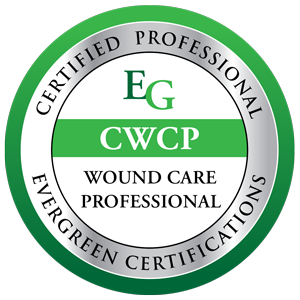
Certification Made Simple
It's never been easier to become a Certified Wound Care Professional (CWCP):
- Step 1: Watch this online course.
- Step 2: Complete the CE test(s) and instantly print your certificate(s) of completion.
- Step 3: Submit the Certification Questionnaire included in this training, and your application is complete.*
That's it! No hidden fees. No catch. Just certification made EASY.
*Professional standards apply.
Click Here to Learn More About CWCP Certification
Who Should Participate? Nurses, nurse practitioners, physician assistants, physical therapists, occupational therapists, and all other clinicians who want more success treating wounds!
For just $499.99, you'll get...- Access to 14 leading wound care experts — including NPs, PTs, RNs, & RDs
- Latest evidence and guidelines for venous, arterial, diabetic wounds, and more
- Earn up to 36.25 CE hours related to wound care
- Watch skill demonstrations for the most challenging wounds
- Documentation and intervention tips to reduce your legal risks
- 7 FREE Video Bonuses! Including hyperbaric treatments, advanced pressure injury strategies, wound care documentation tips, managing the diabetic foot, & more!
- And... become a Certified Wound Care Professional — at no extra cost!!

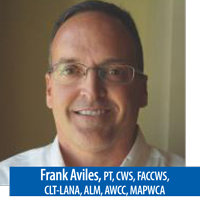
Trends, Barriers, and Opportunities
Elizabeth Faust, MSN, CRNP, CSWS, CWOCN-AP®, MAPWCA and
Frank Aviles, PT, CWS®, FACCWS, CLT-LANA, ALM, AWCC, MAPWCA
- Current hot topics
- Innovations in wound care
- Technology is changing the way we practice
- Barriers to evidence-based practice
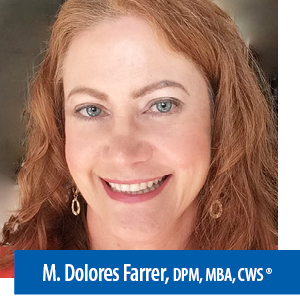
M. Dolores Farrer, DPM, MBA, CWS®
- Establish debridement goals
- Appropriate use of conservative and sharp debridement
- Instrument selection for debridement
- Strategies for pre and post-debridement wound measurements

April Lumpkins, MSN, AGACNP-BC, CWOCN-AP®, CFCN
- Set the goals for specific wound
- On-going evaluation of the treatment plan
- Most effective cleansing techniques
- Newest wound cleansing agents
- Selecting between primary, secondary & securement dressings
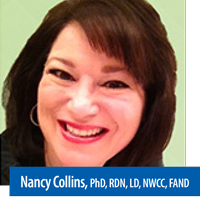
Nancy Collins, PhD, RDN, LD, NWCC, FAND
- Malnutrition and the nutrition-focused exam
- Key considerations on body composition
- Distinguish between cachexia and sarcopenia
- Needs and goals of medical nutrition therapy
- Develop a realistic and goal-oriented nutrition care plan
- Vitamin and mineral supplementation: Vitamin C, D, and Zinc

Negative Pressure Wound Therapy & Wound/Fistula Managers
Joan Junkin, RN, MSN
- Tricks for removing the NPWT dressing
- Prepare for initial NPWT placement
- Tools for special and specific wound needs
- Initiation of therapy

Nilma Z. Elias Santiago PT, DPT, WCC, CLT, OMS
- Phlebolymphedema causes and risk factors
- Evaluate history, clinical presentation, and diagnostic test results
- Arterial vs. venous ulcers complications
- Assessment, debridement, and dressing selection to manage the wound
- Compression therapy
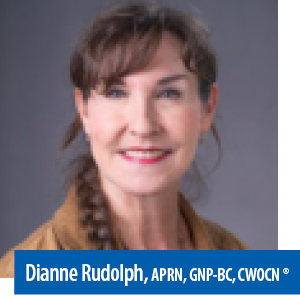
Dianne Rudolph, APRN, GNP-BC, CWOCN®
- Differentiation between venous leg ulcers, arterial ulcers & diabetic foot ulcers
- Current classification schemes: CEAP, Wagner, UTHSCSA, and Fontaine classification
- Best standards of care for management of lower extremity wounds
- Surgical interventions for leg ulcers and indications for surgical consultation
- Comparison of compression modalities
- Emerging technologies in leg ulcer management
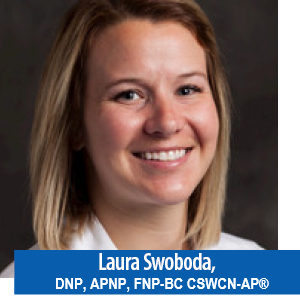
Laura Swoboda, DNP, APNP, FNP-BC CSWCN-AP®
- How to prioritize symptom relief
- Management strategies for different types of palliative care wounds
- Goals of infection prevention, pain reduction and odor management

Nilma Z. Elias Santiago, PT, DPT, WCC, CWCP, CLT, OMS
- Integrate cultural competence into the delivery of wound care
- Identify ethical concerns encountered in wound management
- Evaluate when other disciplines should be involved in a patient's wound care
Advanced Wound Care Certification Program
Train with 14 Leading Wound Care ExpertsA $1,219 value!

Elizabeth Faust, MSN, CRNP, CSWS, CWOCN-AP®, MAPWCA
- Critically ill patients' risk for skin injuries
- Risk scales and assessment - Braden, Jackson Cubbin, Pressure Injury Staging
- Case studies - Bundle care, immobilization, injury causation
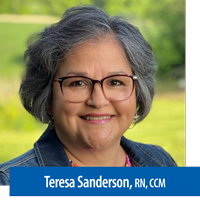
Multi-Million Dollar Marketing Secrets
Teresa Sanderson, RN, CCM
- The BIG lessons I learned
- One marketing pitfall to avoid
- Market your business with impact
- Create a steady stream of referrals

Hyperbaric Oxygen Therapy and Topical Oxygen
Laura Swoboda, DNP, APNP, FNP-BC CSWCN-AP®
- Improve hyperbaric oxygen therapy results
- Mono vs. multiplace chambers
- Transcutaneous oxygen therapy current evidence
- Healing outcomes and ulcer recidivism from TCO therapy
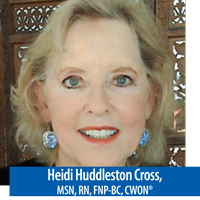
Strategies for Prevention, Assessment & Treatment
Heidi Huddleston Cross, MSN, RN, FNP-BC, CWON®
- Practice tips for prevention
- Role of nutrition in pressure injury development
- Pressure injury assessment strategies from an expert
- Clues from wound infection and complications
- Latest wound dressings and therapies

Kim Saunders, MSN/ED, RN, CWON®, CFCN
- Predict and chart wound healing based on presentation
- Efficiently document a comprehensive wound plan of care
- Documentation tips for preventable pressure injuries
- Special considerations to note for mechanical injuries from the top-down
- Wound examples to evaluate care provided & documentation

Ann Kahl Taylor, MS, RN, CWOCN®
- Policy updates can become critical when scrutinized later
- Can't miss considerations for pressure injury prevention
- Key assessments as the courtroom downfall
- Documentation pitfalls to avoid
- Algorithm examples to immediately put into practice
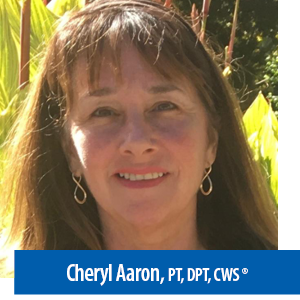
Cheryl Aaron, PT, DPT, CWS®
- Assessment and diagnostic tools to incorporate
- Assessment of bacterial burden
- Orthopedic assessment strategies
- Vital role of dietitians
- Optimal wound healing requirements
- Selection process between available therapy modalities
Advanced Wound Care Certification Program
Train with 14 Leading Wound Care ExpertsWe’re that confident you'll find this learning experience to be all that's promised and more than you expected.

